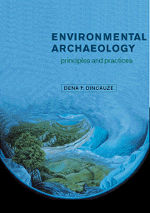Book contents
- Frontmatter
- Contents
- List of figures
- List of tables
- Preface
- Acknowledgments
- Glossary
- PART I INTRODUCTION
- PART II CHRONOLOGY
- PART III CLIMATE
- PART IV GEOMORPHOLOGY
- PART V SEDIMENTS AND SOILS
- PART VI VEGETATION
- PART VII FAUNA
- 15 FAUNAL PALEOENVIRONMENTS: CONCEPTS AND METHODS
- 16 FAUNAL PALEOECOLOGY
- 17 HUMANS AMONG ANIMALS
- Case Study: Howdowe read these bones? Seasons of use at Star Carr
- PART VIII INTEGRATION
- References
- Index
17 - HUMANS AMONG ANIMALS
Published online by Cambridge University Press: 20 January 2010
- Frontmatter
- Contents
- List of figures
- List of tables
- Preface
- Acknowledgments
- Glossary
- PART I INTRODUCTION
- PART II CHRONOLOGY
- PART III CLIMATE
- PART IV GEOMORPHOLOGY
- PART V SEDIMENTS AND SOILS
- PART VI VEGETATION
- PART VII FAUNA
- 15 FAUNAL PALEOENVIRONMENTS: CONCEPTS AND METHODS
- 16 FAUNAL PALEOECOLOGY
- 17 HUMANS AMONG ANIMALS
- Case Study: Howdowe read these bones? Seasons of use at Star Carr
- PART VIII INTEGRATION
- References
- Index
Summary
[Biological anthropologists] know, better than any other scientists know, that the human condition is an aspect of the animal condition; that people are animals and the descendants and cousins of animals, and that the seemingly unbridgeable gulf that separates us from other animals is an illusion due to the accidents of history.
CARTMILL 1994: 5 [By permission of Wiley-Liss, Inc., a subsidiary of John Wiley & Sons, Inc.]Human ecology is a discipline fragmented among academic departments of geography, biology, anthropology, history, and economics. How central is it to archaeology, both prehistoric and historical? How central is it to understanding the human condition? The answer to the second question is the same as the answer to the first, and I choose an emphatic “Very.”
Relationships between humans and other animals are the special focus of this chapter. Much of importance to individual organisms and species in the Animal Kingdom is inseparable from human concerns. As animals among animals, we share bits of DNA and somatic organization with many organisms to whom we feel no kin. Western industrial cultures share little of the awe, respect, and even fellow-feeling that people in cultures closer to the earth readily bestow on non-human animals. Nevertheless, the fates of industrialized people are equally involved with the fates of all organisms that comprise our environments (Part I). Invisible pathogens can determine the fates of individual humans and social groups. The tree that falls in the forest, the animal that dies in the trap, are significant elements in our world. Some organisms now going to extinction are unacknowledged keystone species, whose loss has consequences for untold others.
- Type
- Chapter
- Information
- Environmental ArchaeologyPrinciples and Practice, pp. 468 - 488Publisher: Cambridge University PressPrint publication year: 2000

